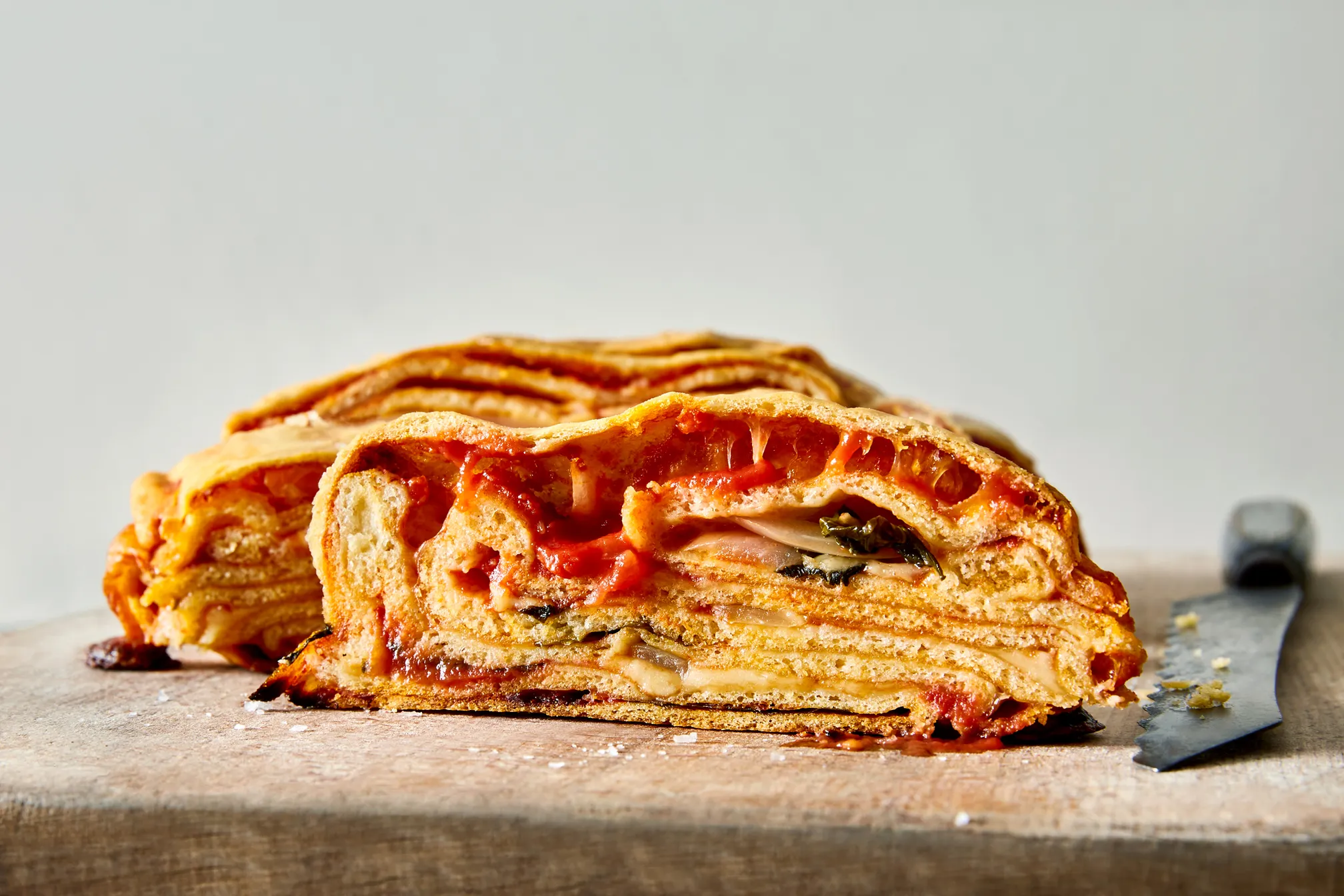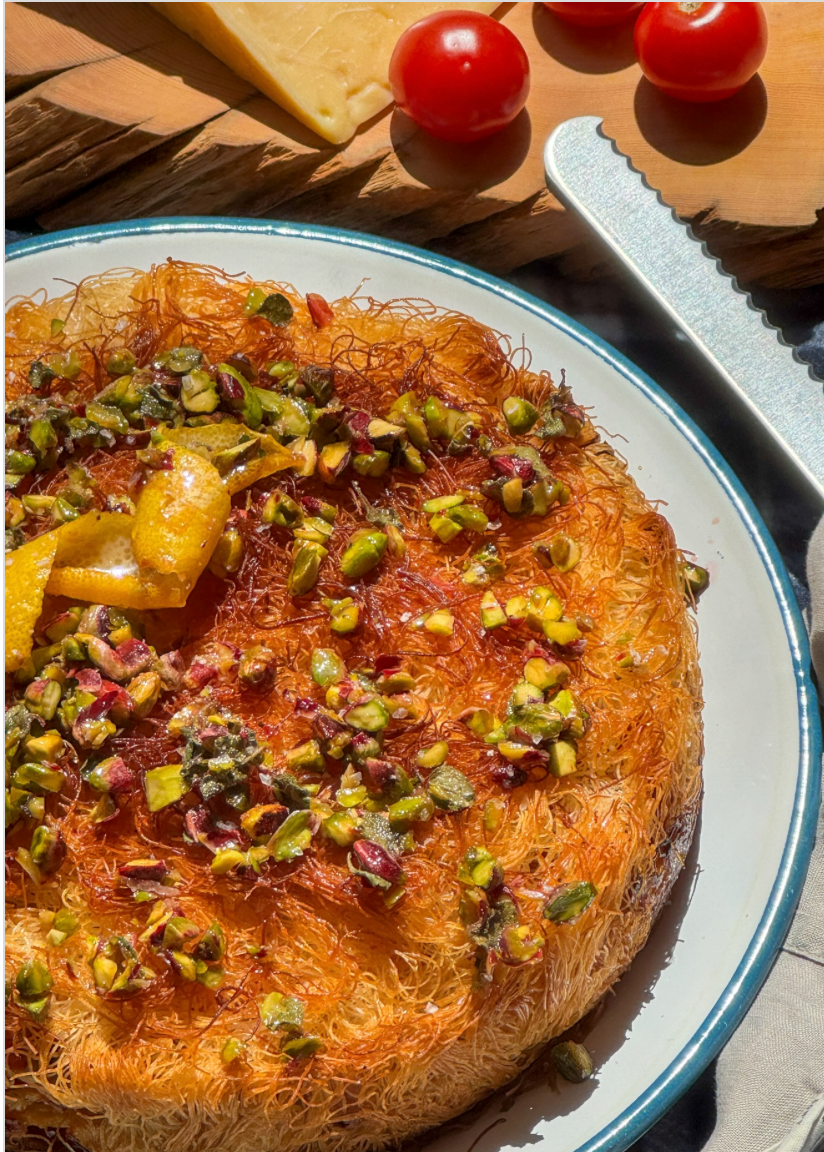I began with scaccia and almost ended with quiche
- rosemary
- Mar 12, 2023
- 5 min read
"Essentially, what they all share is the principle that behind a perfectly ordinary piece of pastry that looks nothing special on the outside lies something unexpectedly rich and delectable, something worth a short wait and a little poke around." Yotam Ottolenghi

Some time ago now I saw this dish featured in a Guardian newsletter. It was a recipe from Ben Tish - whoever he is - and it was for something called scaccia, which he had discovered on a trip to Sicily and the town of Ragusa. For this - and the picture top left - are of Scaccia Ragusana. The one at the top is a recipe by Anna Francese Gass on the Food52 website. According to Wikipedia, Ragusa is the home of scaccia but Siracusa is also said to have a version although a quick search did not find any reference to it. The word comes from the Sicilian 'scacciata' meaning to drive away, although the Italian word 'schiacciata' meaning to crush or flatten would seem to be rather closer to what it actually is. I cannot quite see the connection between driving away and a pastry made with thin semolina dough. Interesting, nonetheless.

Ben Tish said that he had tasted it at the Panificio Giummarra in Ragusana who apparently make the 'best' scaccia in the world - shown here at right. The actual genuine article. Tish didn't get the recipe but went away and practiced and came up with the above which he felt was a close approximation. I'm not sure I quite agree - well taste wise it might be true, but texture wise I'm guessing not, because his pastry is much thicker than the original shown here. In fact his is rather more like stromboli - which I shall come to.

As I went searching for other versions I came across Lorraine Elliott's Not Quite Nigella website on which she took her readers through a class she had had with a genuine Sicilian on how to make Scaccia. And I have to say it looked rather more authentic. Rather more like the version from Ragusa itself and also from Anna Francese Gass's description:
"Scaccia Ragusana begins with a delicate semolina dough rolled out thin and filled with tomato sauce, paper-thin onion slices, and, traditionally, caciocavallo cheese" Anna Francese Gass
The dough is the important thing - it's a yeasted dough made with semolina and olive oil and rolled out very thin:
Holes don't matter - better to get it thin:
"if a hole should occur, just patch (or don't). That's where the fillings seep out and caramelise." Lorraine Elliott/Not Quite Nigella
And yes, traditionally the filling is tomato and cheese, sometimes with onion, but, like pizza you can actually fill it with anything.
"Consider this delicious dough a blank canvas for you to fill with whatever you choose." Anna Francese Gass
It's street food, designed to be sliced and wrapped in some greaseproof paper. But eat it whilst it's still hot - well at least warm.
And a final word of advice from Lorraine Elliott:
"the secret to a perfect scaccia ragusana. Firstly, make sure that the oven is very hot. Scaccia ragusana should never be puffy, it should be flat and thin even though it is a yeasted dough and the hot oven allows it to develop the thin dough with a lovely bite to it. Also cover your scaccia ragusana with a tea towel for 10 minutes when it's out of the oven. This will help the top of the bread to become softer." Not Quite Nigella

Before we leave the scaccia I should mention that the owner of the panifico in Ragusa had told Ben Tish that it was related to the Tunisian brik - shown here. Well the pastry is thin, but it's a kind of filo pastry and it's also fried, not baked. This one is from a website called So Delicious. I have to say that I understood the brik to be an individually formed pastry, but when I looked for images, there were indeed several in which a roll of pastry had been stuffed. A bit like a strudel really. And that is baked. And there are savoury strudels as well. Although you don't often think of a strudels as street food do you? And I do think that all of the examples I am talking about in this post are street food, snacks rather than a meal. Well ... we'll see.

But let's not dismiss Ben Tish, because I think what he has really made is stromboli. This is the Not Quite Nigella version and as you can see the filling is more the thing here, and there's lots of meats like salami and ham in there. Not to mention the fact that the dough is somewhat thicker. Because basically what you have here is a pizza dough, rolled a little thinner than usual and rolled around a a pizza kind of filling, baked in the oven and then sliced.
And it's not Italian. You won't find it there. It's Italian/American - an invention of the 1950s. There are, of course, rival claims but most seem to think it was invented just outside Philadelphia at Romano's Italian Restaurant & Pizzeria in 1950.
Why is it called Stromboli? Well it's not named after the volcano. It's named after the film of that name directed by Rossellini and starring Ingrid Bergman, and which was in the news at the time because of the then scandalous affair of the two.

Even though Ottolenghi is half Italian he does not seem to have ventured into the scaccia world, but he - or one of his team - have definitely ventured into stromboli with this rather glorious soundin, and looking, Cheesy fruit stromboli. The fruit in this case is blueberries but I'm guessing it could be anything. It demonstrates that a stromboli is as he says, "basically pizza dough stuffed with stuff." So go for it.
And while we are on pizza dough what about calzone? I must admit I find calzone to be a bit too solid - is that the right word? - although it really shouldn't be any more solid than a pizza. After all it's: "essentially just a pizza folded around its centre" as Ottolenghi says. There are, of course, zillions of examples online. The one below - Tomato, pesto and mozzarella calzone - is from Coles - so I'm guessing it's simple.

Almost a kind of Cornish pasty really, albeit with different pastry.
But I'm not done yet. I then discovered there is pizza rustica. Although I have to say there seems to be a bit of variation in what people think a pizza rustica is. Below are the two extremes: Pizza rustica with olive oil pastry from Sylvia Colloca - a thinnish thing a bit like a calzone and Pizza Rustica from the original Nigella. Nigella's looks more like a pie with the filling being almost quiche like. She's not alone in this kind of presentation however.
And I'm not even going to mention stuffed focaccia. Well I did. But that's all I'm doing.
Yotam Ottolenghi's theory about calzone: "it is all about surprise, contrast and delayed gratification." could be equally applied to any kind of food that is 'stuff stuffed inside some kind of pastry or dough'. The world is littered with examples. The above are just some of them. Italianish ones.
Calzone - it's Yotam Ottolenghi -














Comments